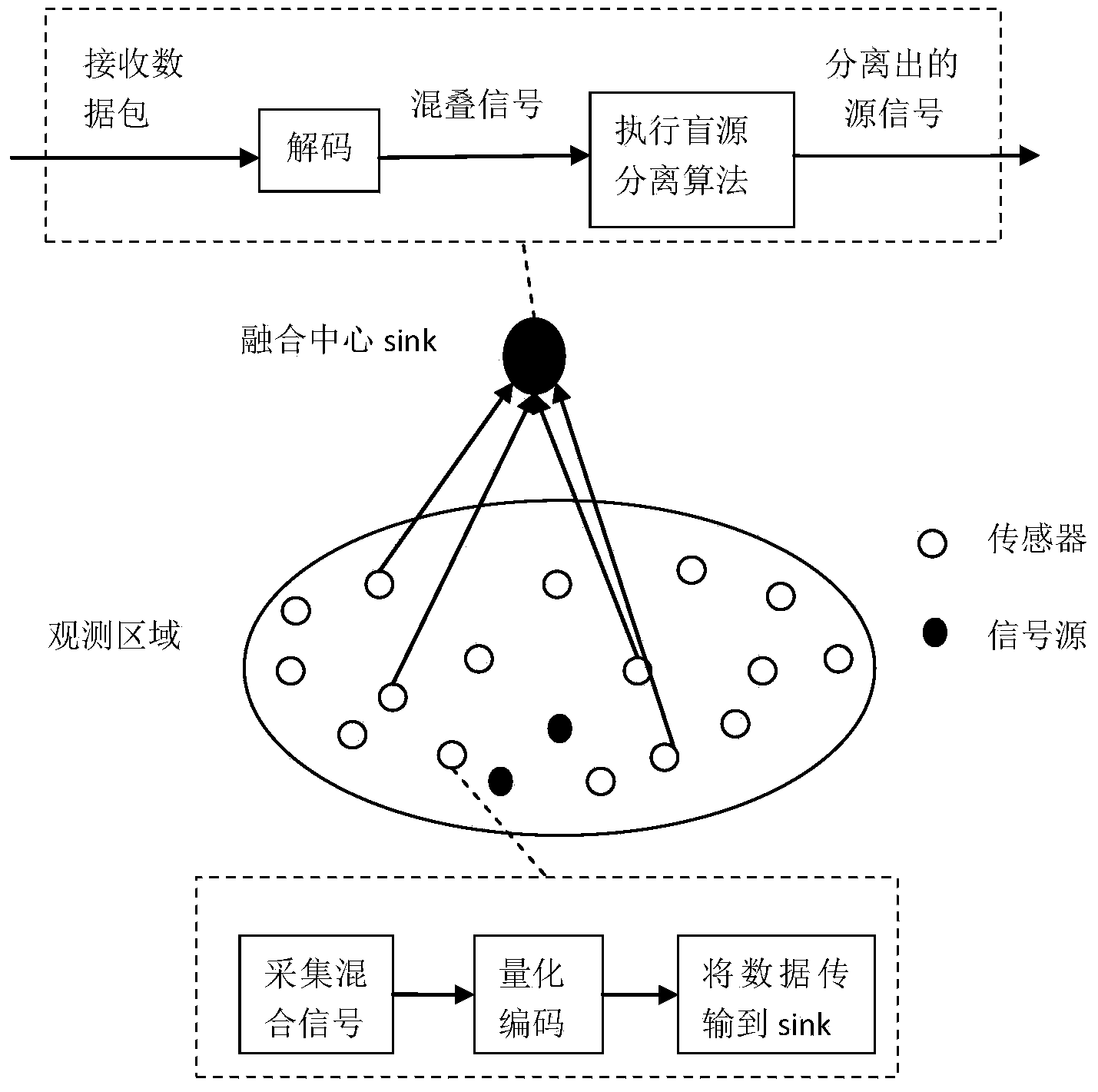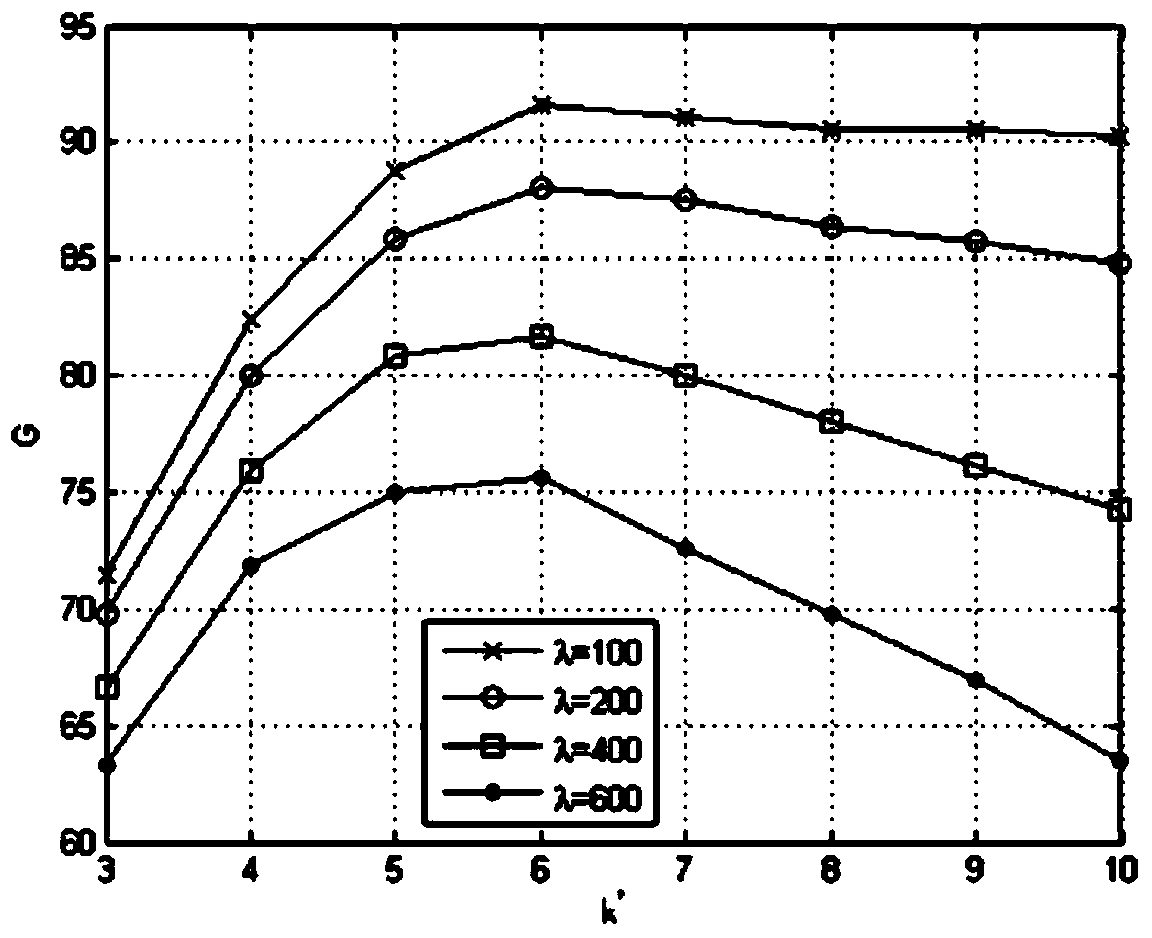Wireless sensor network node selection method based on blind source separation
A sensor node and wireless sensor technology, applied in network topology, wireless communication, advanced technology, etc., can solve problems such as no recharging, limited energy of a single sensor node, etc.
- Summary
- Abstract
- Description
- Claims
- Application Information
AI Technical Summary
Problems solved by technology
Method used
Image
Examples
Embodiment Construction
[0032] 1. Determination of the optimal number of sensor nodes
[0033]In the present invention, the blind separation of the mixed signal is completed at the sink node of the fusion center, and the sensor node is only used to collect the mixed signal and transmit it to the sink node of the fusion center. With the increasing maturity of high-performance and low-power processor and sensor module technology, the energy consumed in the actual work of sensor nodes is mainly concentrated in the wireless communication module for data transmission. Therefore, reducing the amount of node data transmission is of great significance to saving energy consumption. To reduce the transmission amount of nodes, an effective method is to select only k nodes from a large number of WSN nodes each time to transmit their observation data to the sink of the fusion center for blind source separation, and most of the other nodes do not transmit data, but wait for If it is selected in the next round of ...
PUM
 Login to View More
Login to View More Abstract
Description
Claims
Application Information
 Login to View More
Login to View More - R&D
- Intellectual Property
- Life Sciences
- Materials
- Tech Scout
- Unparalleled Data Quality
- Higher Quality Content
- 60% Fewer Hallucinations
Browse by: Latest US Patents, China's latest patents, Technical Efficacy Thesaurus, Application Domain, Technology Topic, Popular Technical Reports.
© 2025 PatSnap. All rights reserved.Legal|Privacy policy|Modern Slavery Act Transparency Statement|Sitemap|About US| Contact US: help@patsnap.com



